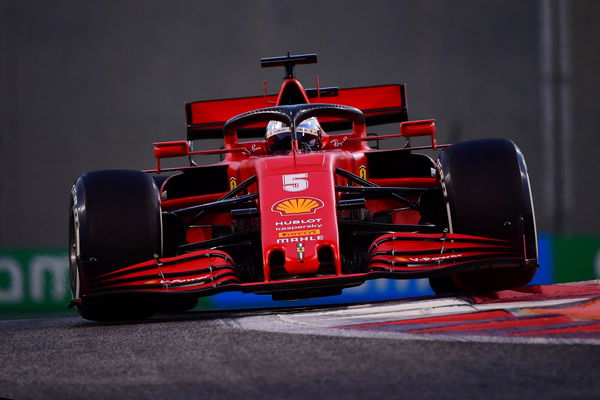
via Reuters
Formula One F1 – Abu Dhabi Grand Prix – Yas Marina Circuit, Abu Dhabi, United Arab Emirates – Ferrari’s Sebastian Vettel during practice Giuseppe Cacace/Pool via REUTERS

via Reuters
Formula One F1 – Abu Dhabi Grand Prix – Yas Marina Circuit, Abu Dhabi, United Arab Emirates – Ferrari’s Sebastian Vettel during practice Giuseppe Cacace/Pool via REUTERS
The F1 cars are the most technologically advanced constructors at present. There are many features instilled in the single-seater F1 cockpit. The cockpit has a firm grip. Further, the F1 cars cars have a clutch.

via Reuters
Formula One F1 – Abu Dhabi Grand Prix – Yas Marina Circuit, Abu Dhabi, United Arab Emirates – December 13, 2020 Mercedes’ Lewis Hamilton in action after the race Pool via REUTERS/Hamad I Mohammed
However, the clutch of the F1 does not work the same way as in normal cars. Subsequently, the clutch performs electro-hydraulically. Further, when the cockpit is not active, moving to the first gear, the process varies. During such time, the clutch is under the driver’s control. Further, the driver has to push the paddle that is crafted just behind the steering wheel of the car. However, in a cockpit, the number of paddles allowed are just two.
ADVERTISEMENT
Article continues below this ad
The racers would have a grip since they need to begin from zero without slowing down the motor. Equation One transmission (like cruisers) is a consecutive transmission. Further, it is a sort of manual transition where the driver needs to change gears altogether. Nevertheless, the skipping of gears is not possible, like in a customary H-design transmission.
Clutch and its Functions Explained
In F1, the driver in the cockpit uses the clutch while firing up their engines. Subsequently, there is no launch control system in the constructor, further, it calls for the driver’s manual effort.
The drivers apply force on the clutch at the beginning of the race when the car needs to roar and move forward in the circuit. When the lights turn red in the circuit, the driver very vigilantly pulls the paddle of the clutch. Further, when the racers are set to move, they release the paddle of the clutch. However, the racers do not liberate the clutch at a go, as long as the racer feels the speed of the car is being adjusted. At the point when the upcoming show of light is about to turn up, the paddle of the clutch goes into entire relax mode.
The F1 racers are allowed to take control of two paddles of the clutch too. However, the system for this is no different. In this system, the racers pull one paddle of the clutch entirely. However, the second clutch is left at the bite point (i.e. not letting go of the clutch entirely).
The second procedure is not as easy as the first one with one clutch paddle. Subsequently, using this feature is more difficult since the wheels receive a heavy load of power, all at a single go. This can prove to be dangerous amidst the racing session if anything goes wrong.
The Set of Clutch Rules in 2020 Season
As per the rules of 2020, at the beginning of the race, the manual control of the driver over their cockpit is the most. Further, the electronic power is relatively less when the race takes off. The chassis is nearly 90% under the control of the respective racers.
ADVERTISEMENT
Article continues below this ad
The clutch in F1 at present is a ‘multi-plate carbon design‘, further, it has a minuscule diameter of 100mm. The entire clutch-paddle system weighs around one kilogram. With a level of high rpm of 15,000, the power restrained on the clutch turns out to be quite upscale. The pipework that connects to the chassis engines has got down in this season as per FIA rules. From the measurement of 2 liters, it has gone down to 0.25 liters. Further, it prevents certain fuel tricks from taking place and oil mixing with fuel in other regions of the cockpit.
The rear-view mirror has gone through certain refurbishment procedures, too. Conversely, they have been compacted and enclosed in a smaller area, which affected the aerodynamic benefits further. There are certain other changes with the mirrors too, to keep a check on the driver’s efficiency of manual power racing.
However, the pressure on the racers to start off the race without faults and flaws is not easy. While the pressure to ace the race is on the shoulders of every racer, there are several other difficulties too. The temperature in the cockpit is extremely high and furthermore, the safety kit worn by every racer adds to it. Further, the racers stay extremely sure of their move and the use of clutch should be immaculately perfect.
ADVERTISEMENT
Article continues below this ad
Read More: Why Do F1 Drivers Wear Balaclavas?
ADVERTISEMENT
ADVERTISEMENT
ADVERTISEMENT
ADVERTISEMENT

